Inside: This group of Modern Mexican artwork will inspire you with emotion, depth, and storytelling. Explore these top Mexican artists as well as new artists you may not know!
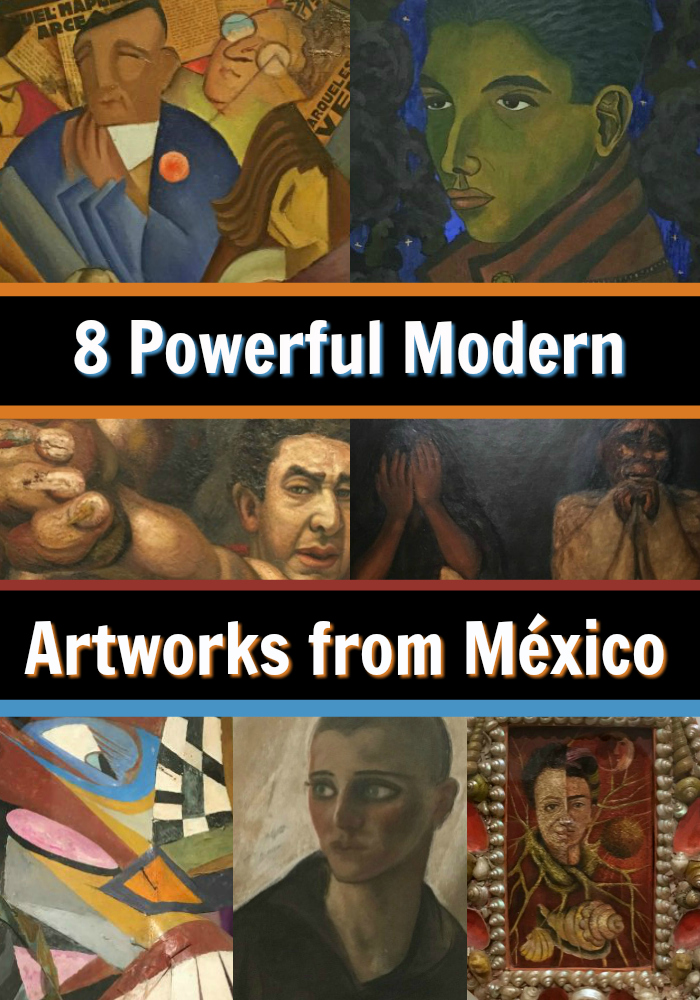 I don’t know how much art is worth be caught outdoors in an epic torrential rain miles from the car with two crying children, but I think I found some that made it worth it.
I don’t know how much art is worth be caught outdoors in an epic torrential rain miles from the car with two crying children, but I think I found some that made it worth it.
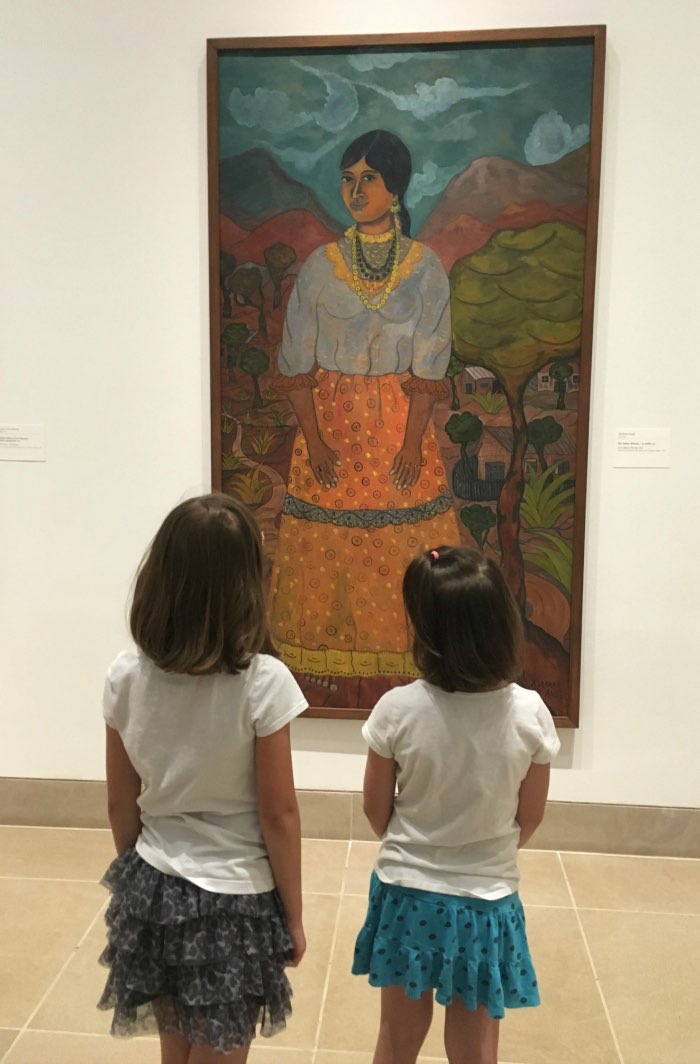
A few weeks ago, my family and I visited the México 1900-1950 exhibit at the Dallas Museum of Art, and it was INCREDIBLE! The exhibit from Mexico City only has one stop in the U.S. and is in Dallas until July 16, 2017.
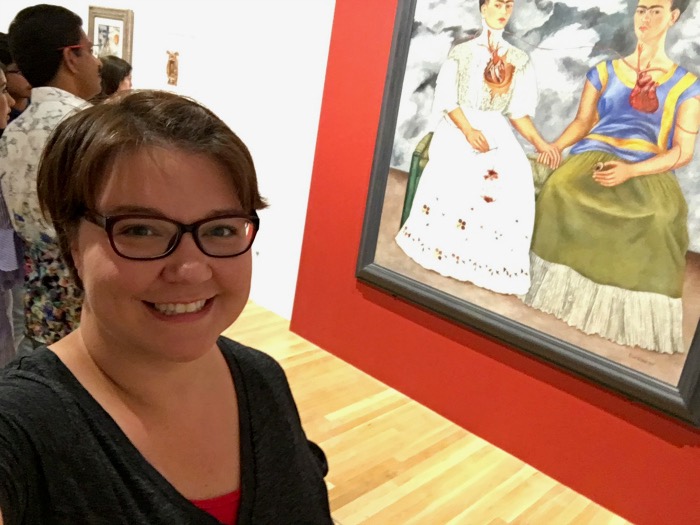
A highlight of the exhibit was of course The Two Fridas by Frida Kahlo. I’ve spent lots of time with this Mexican artwork with students but have never seen it in person. I finally got a good close-up of the Diego in her hand! See my post about The Two Fridas here for some interactive activities include a free printable worksheet!
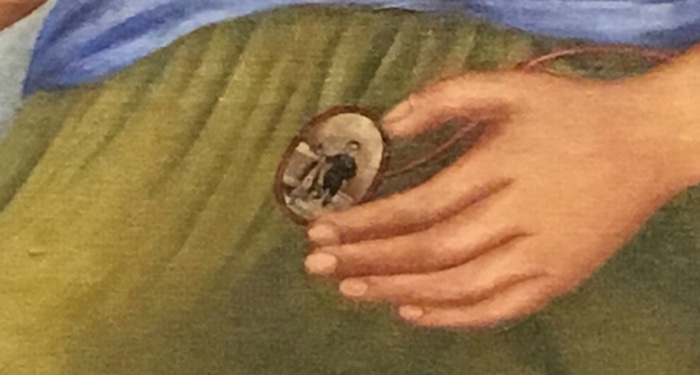
In addition to The Two Fridas, every artwork in that exhibit was incredible! If you have a chance to visit Dallas to see the exhibit before July 16, I highly recommend it! The raw, emotional, and powerful art in the exhibit was breathtaking. Here are some of my favorite Mexican artworks.
David Alfaro Siqueiros, Self-Portrait (The Great Colonel), 1945
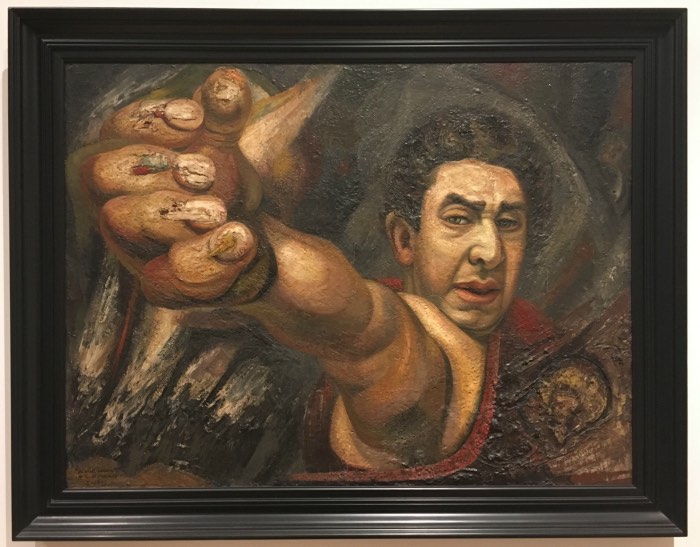
I love this Mexican artwork so much I can’t even stand it. I’ve never seen anything like it. The distorted shoulder, the intense perspective, the texture on those crazy nails, the tenebrism and chiaroscuro. Ahhhh so good. I took a close-up shot of the fingernails so you could see the texture. Amazing.
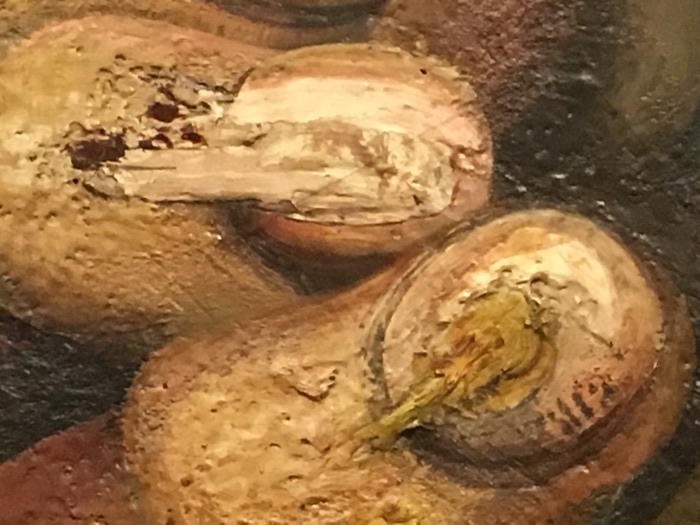
Siquieros was a revolutionary and painted highly charged murals and paintings that were meant to make you feel and act. In just a self-portrait, he manages to make you feel disturbed and intrigued.
Ramón Alva de la Canal, Nobody’s Café, 1930
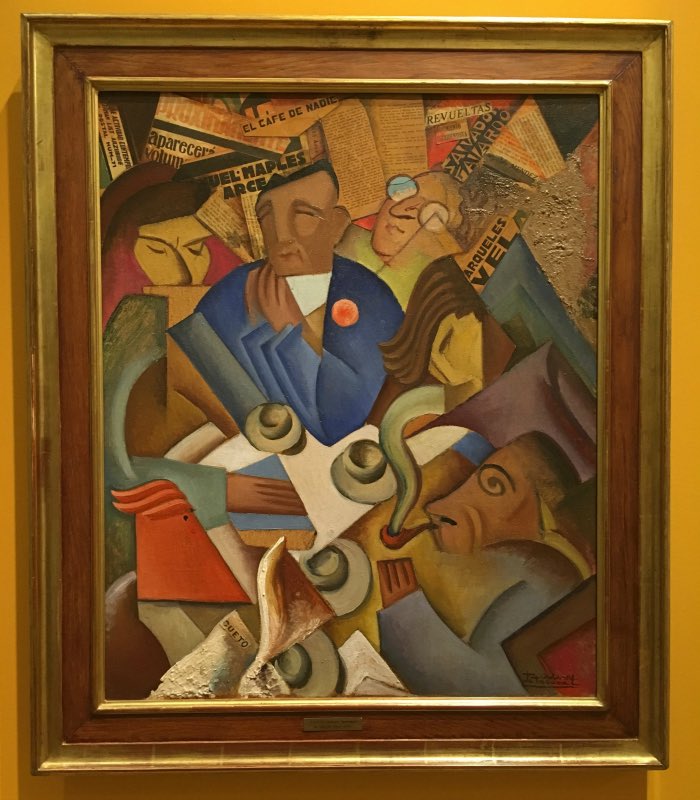
I’m actually not crazy about Cubism. I see its place in the world. I understand how totally revolutionary it was, but for me, I like art to have a little more punch and meaning to it. That’s why I was delighted to see this work by de la Canal. It has classic Cubist components, but it has such a cool life and energy. This would be a fun one to teach along with Picasso’s Three Musicians and forgive me but maybe a little Dogs Playing Poker (haha!). The elements of art and principles of design in this one are fun to analyze and study. The repetition, the contrast in textures, and the directional lines that guide your eye around the painting would be great to study with students.
Germán Cueto, Mask I, 1924
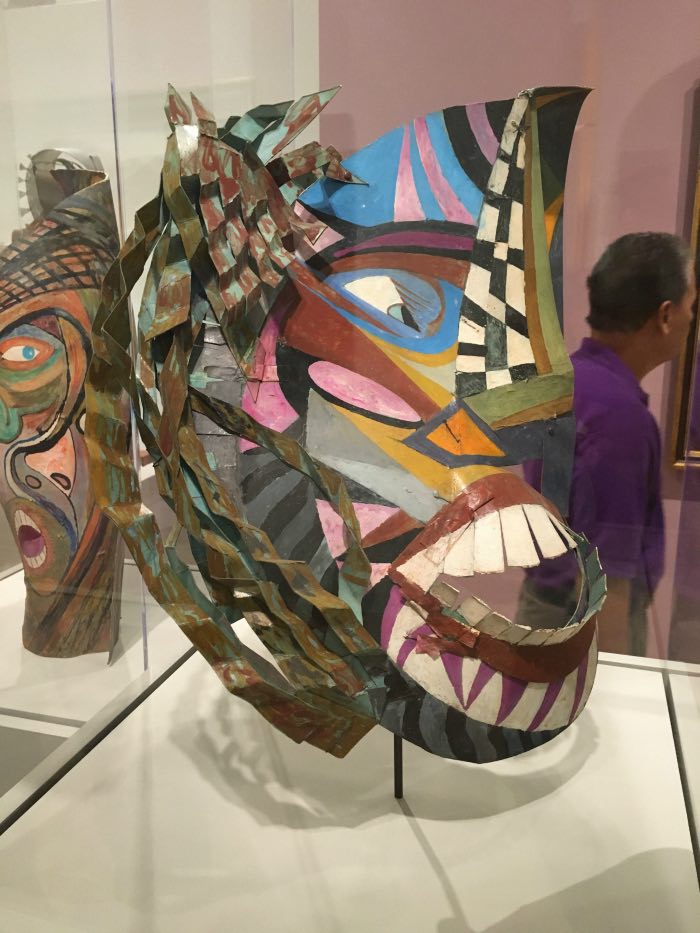
This Mexican artwork to me stood out not only because it just looks totally awesome but because it looks to me like something straight out of the modern avant-garde art of the early 1900s in Europe. Had it not been in the exhibit, I would have guessed it was from a Spanish artist like Picasso or Juan Gris. After some research, I see that German Cueto did spend five years in Europe where he was influenced by such artists. When he came back to Mexico and participated in the flurry of artworks coming after the Mexican Revolution, he stuck with this European influence even though others were painting and sculpting in a more distinct Mexican style (ie. the muralists). Cueto has the distinction of being known as the first Mexican abstract artist.
This artwork and his other in the exhibit are bold and colorful and just super fun to look at. I can see this artwork inspiring a paper sculpture lesson!
Gerardo Murillo, Dr. Atl, Nahui Olin, c. 1922
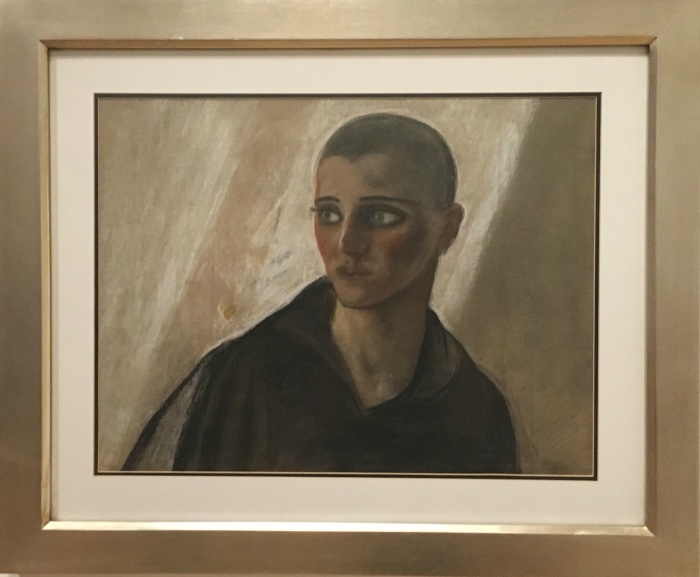
The haunting portraits of and by Nahui Olin were introduced to me by the exhibit, and I needed to know more so I came home and researched. Carmen Mondragón, aka Nahui Olin, was an artist and model in the early 1900s. She traveled to Europe where she met many of the famous Modern artists. Both her and her husband began to paint. When she returned to Mexico, she split with her husband and become a key member of the art scene in Mexico. Not only did she paint and write poems, but she was a model for many many other artists including Diego Rivera. She had a love affair with Gerardo Murillo aka Dr. Atl, and he gave her the nickname Nahui Olin which is after an Aztec symbolic word for earthquakes.
You can see that earth-shaking quality in her paintings and the paintings of her in the exhibit. In her self-portrait in the exhibit, she depicts herself with oversized green eyes, and Dr. Atl showed her intense eyes in his two portraits of her from the exhibit as well. I chose this painting as my favorite of the three, but I’d love to continue my study of Nahui Olin for a future blog post. She sounds like an amazing character!
Frida Kahlo, Double Portrait of Diego and Me, 1944
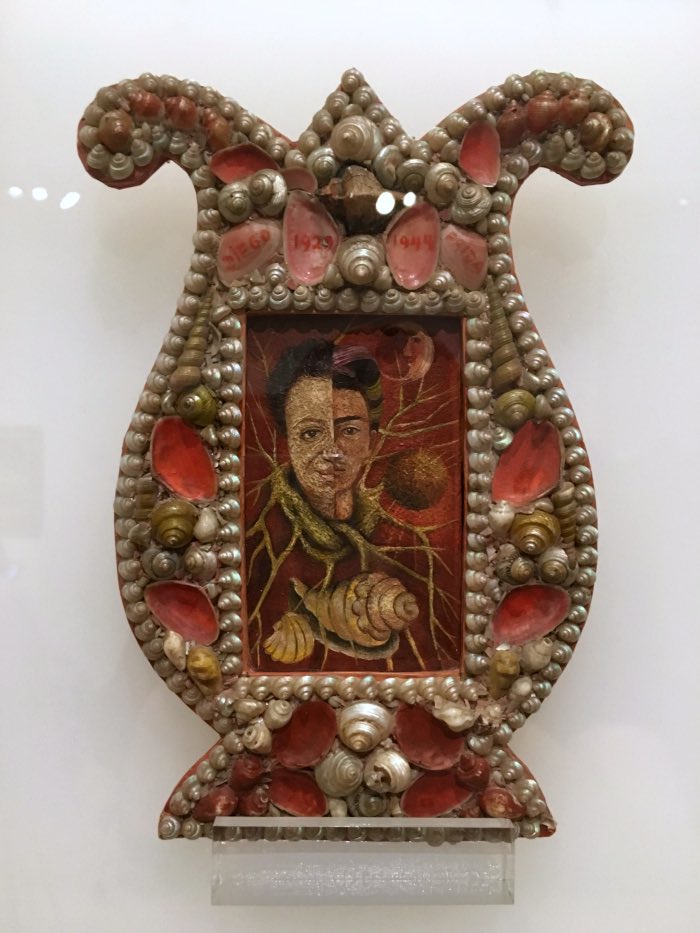
I love this special little artwork by Frida. Maybe because I am just off a beach vacation with my kiddos who loved hunting for shells, but the charm of the seashells really get me. Frida’s art is always so thought-provoking and interesting, and this is so different that it adds another dimension to this complex and fascinating artist.
Frida has always said she paints for herself. This to me looks like something she made purely for herself and her husband, perhaps for an anniversary or for a gift. If you look at the shells on the top, it has the names of Diego and Frida as well as 1929, the year they first married, and 1944, the year this Mexican artwork was made. It’s lovely and delightful.
Francisco Goitia, Tata Jesucristo, c. 1925-27
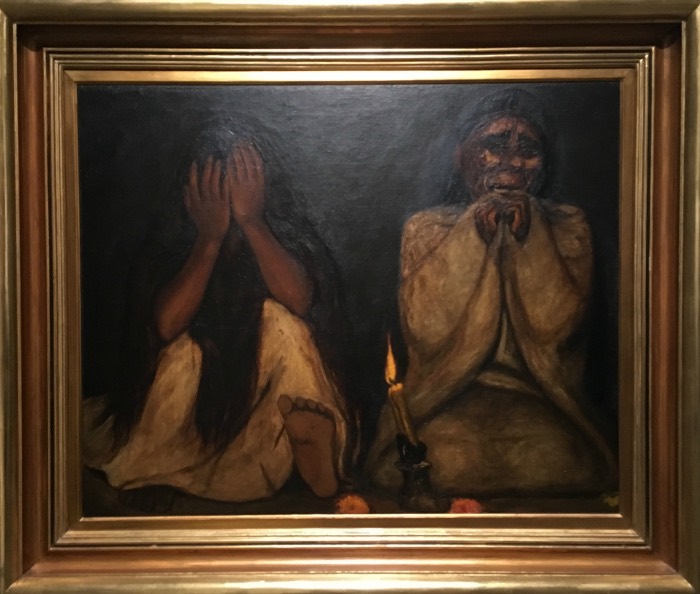
This painting drew my attention immediately. Early in the exhibit, there were many artworks related to the Mexican Revolution which was a long struggle from 1910-20 to end the dictatorship in Mexico leading to the constitutional republic it is today. Artists responded to the war in a variety of ways from patriotic to hopeful to capturing the devastation of war. This artwork is one of the latter. The personal grief of these two women struck me in a way similar to my experience with Guernica. There is nothing like art to show us truth and emotion.
Francisco Arturo Marín, Mourning for Zapata, 1957
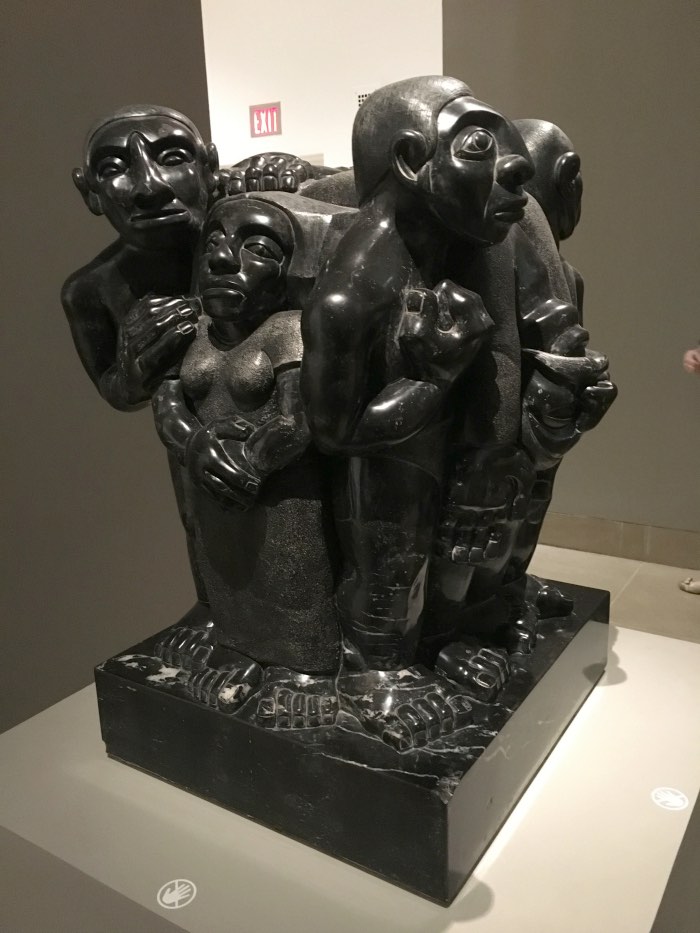
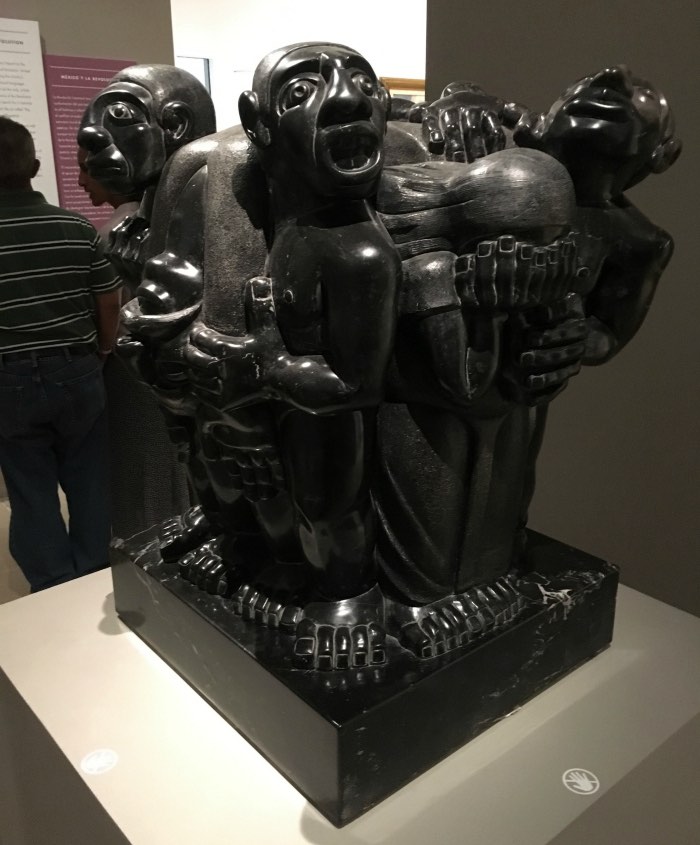
What a powerful and emotional sculpture. This is another Mexican artwork that really caught the attention of my kids. This bronze sculpture depicts four men and two women carrying the dead body of Zapata, a leader during the Mexican Revolution who was assassinated in 1919. All of the figures in the sculpture, minus Zapata, are wallowing in their grief. I noticed that the group on the left were more subdued and internal with their grief while those on the right are more obvious and clearly vocal about it. It’s interesting to see the differences in each character. It reminds me a lot of the emotional aspects of the Burghers of Callais by Rodin—how each person in the group handles the news in such a different way.
Abraham Ángel, Cadet, 1923

I fell in love with this painting because of its creepy-cool quality and intrigue. This artist also painted the one at the top of this post with my daughters looking at it. After doing some research, I am sad to learn that this artist only lived to be 19 years old. He got kicked out of his house by his brother at age 16 for wanting to be an artist. He then studied and had a tumultuous affair with one of his art teachers (Manuel Rodríguez Lozano). When Lozano left him for another young artist, Angel took his own life with a drug overdose. Only 30 of his artworks remain, and all that I can find have such an exciting and distinct style. It’s sad to think where he would have taken his art had lived longer.
Side note: I am an infamous museum conversation spy. I love overhearing conversations about art, and at the DMA in the exhibit, I was delighted to hear a woman discussing this Mexican artwork with a special needs child. She asked him questions about the elements and principles of art such as negative space and complementary color.
For more resources from this Mexican artwork exhibit, check out Mexican painting and the American Dream as well as the Rosa Rolanda Jigsaw art learning activity.

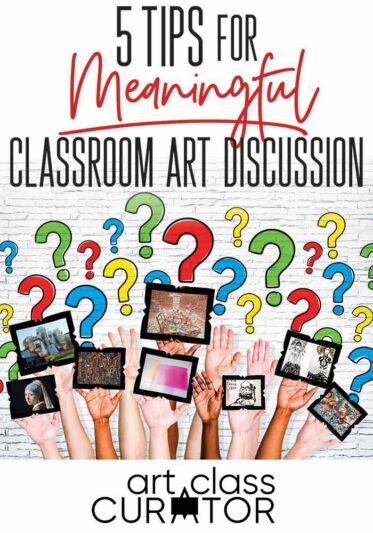
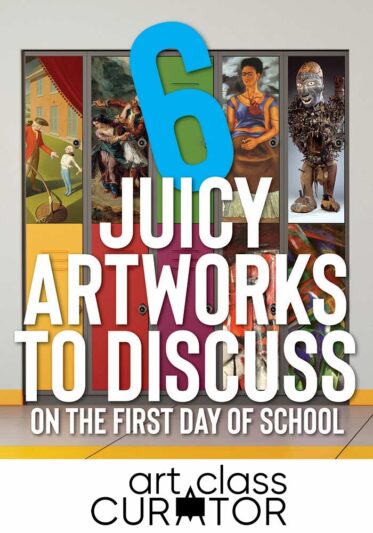
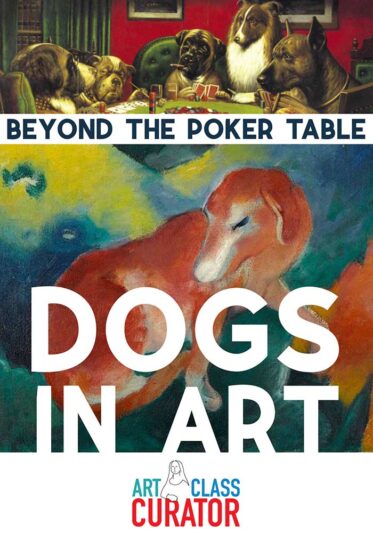
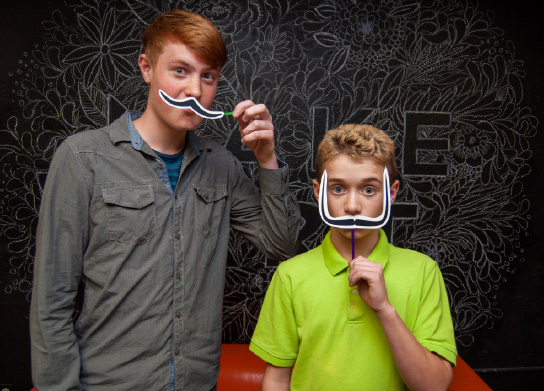
Cindy,
Thank you so much for sharing this! The exhibit has just been set up here in Houston at The Museum of Fine Arts and after reading your post I am very excited and can’t wait to go!
That must be a different exhibit because this was is still open in Dallas!
Thanks Cindy for sharing this wonderful Mexican display of talent. Interesting paintings. I´m going to read more about some artists to teach in class.
Cindy,
Well done. I wish I could get some replicas of this work. Thanks for sharing!